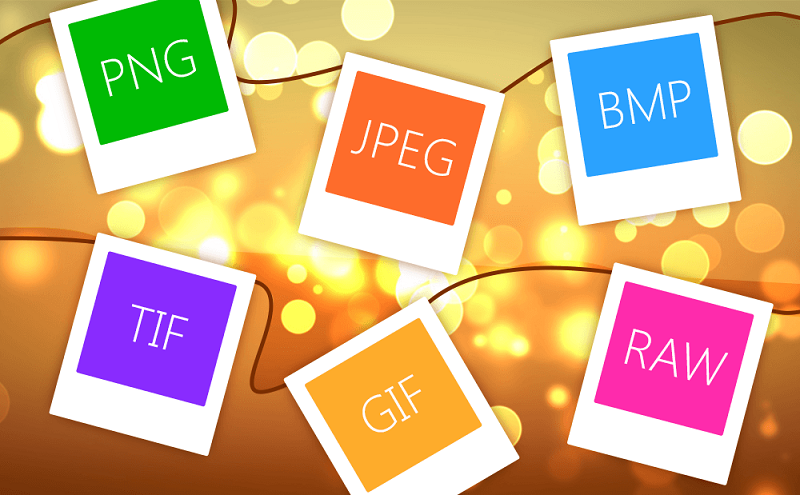
CHOOSING THE BEST IMAGE FORMAT FOR EMAIL MARKETING
Image format occasionally seems like an afterthought, don’t they? GIF, JPG, JPEG, PNG, SVG, etc. There are so many of them.
One would think that if the image looks great, the format shouldn’t matter, right? Well, there are more to these formats than meets the eye and one should consider which format to use when launching an email marketing campaign.
For instance, some formats don’t work well with some browsers, while some don’t show every detail of the image due to compression or otherwise.
What Is the Best Image Format for Email?

We wish we could tell you that there’s a definitive format you should choose for email marketing, but alas, there’s not.
What we can tell you is what format to use based on how you’re planning to use it.
So, keep reading to find out a quick outline of the most common photo formats and which ones to use for your marketing.
We’ll focus on the most popular: JPG, GIF, and PNG.
JPG (JPEG)
If you don’t know, JPEG stands for Joint Photographic Experts Group, an initialism whose sense makes little.
JPGs (the shortened, file extension moniker) display full-color images and they dedicate at least 24 bits of memory to each pixel allowing 16.8 million colors.
JPGs are “lossy” images, a type of compression that selectively discards data while retaining color. Lossy is an effective means of compression, but a loss of image quality can be expected.
As you probably know, the level of compression can be chosen during the save-step in most photo-design programs.
So, for email marketing, JPGs are great for displaying colorful images but are somewhat lackluster when it comes to images with lots of text.
Take the image below as an example:

When compared to the other formats we’ll get into, most JPGs will appear to look fuzzy.
That fuzz is known by the more technical term: artifacts.
If the fuzz is that noticeable on a large headline, like the image above, it’s even more noticeable on the smaller text.
If you’re using colorful text-free images, JPGs are most likely the all-purpose, thoroughbred image format for your email marketing photos. Their small file sizes keep your emails’ load times right where you want them.
| PROS | CONS |
| Colorful—up to 16 million colors | Not great for images with text |
| Smaller file sizes | Cannot be animated |
| Compression can create artifacts |
GIF
GIF, or Graphics Interchange Format, is a file-extension most known for animated pictures that loop over and over.
GIFs, however, can only display a maximum of 256 colors, which makes them great for logos and images with simple illustrations, but not so much for colorful photographs like JPGs.
For email marketers, however, GIFs are useful because they preserve their transparency. For the layman, this means one can place a GIF over another image without seeing the GIF’s border.
Unfortunately (we’re saying this a lot, aren’t we?), the color you choose to make transparent is image-wide, so one should be careful in selecting the transparent color.
The compression technique used for GIFs doesn’t result in a loss of clarity either, so still, GIFs typically have small file sizes.
While animated GIFs are great, be wary of the file size and browser-compatibility issues. Not every email client supports GIFs either.
To get around this, you can make sure your animated GIF also gets its point across as a still image, like the example above.
| PROS | CONS |
| Supports Transparency | Not Good for Colorful Images |
| Can Be Animated | Animated File Sizes Can Be Large |
| Better Than JPEG for Text-Based Images |
PNG
PNG is one of the newest image formats, and it stands for Portable Network Graphics. The quick history lesson is that it was invented to replace GIF but only did so partly. However, that came with some upgrades.
The main calling-card of PNG is that it does transparency better than GIF. Specifically, it allows you to specify the transparency in percentages (layman’s speak for Alpha Compositing), meaning you can control how much of the background image will show through.

As an added bonus, PNG is nearly as good for colorful photographs as JPGs and uses “lossless” compression which is a better type of compression than lossly.
However (there it is again), while the compression allows a reduced file size without the sacrifice of image quality, it doesn’t allow as much reduction in file size as JPG.
Therefore, while more versatile than GIF or JPG, PNG images usually come at higher file sizes.
Since it’s newer, there is a slight chance that not all email clients or browsers support it yet (but that’s typically rare).
| PROS | CONS |
| Lossless Compression | Large File Sizes |
| Better Transparency Than GIF | May Not Be Supported by All Browsers |
| Great for Text and Colorful Photos |
So, What Is the Best Image Format for Email?
There is no right answer.
Yes, it’s that simple. Image format should be solely predicated on the type of content you’re sending.
Have an image that is text-heavy? Use PNG or GIF.
Want a little pizzazz? Use an animated GIF.
Want to show off a colorful display for your latest product? Try JPG.
Creating a new minimalistic logo? GIF or PNG is right up your alley.
The most important thing to keep in mind is how the images look on the final product and how large the images are. Bogging down your email with several animated GIFs will look great, but may take seconds to load, potentially reducing how your subscribers interact with your emails.
If push comes to shove, however, we generally feel confident in saying that JPG should be sufficient for all your email marketing needs.
Happy sending!
